2023 Honda Hornet CB750 Review
Review by Kris Hodgson
I was pleasantly surprised by how good this new CB750 is, especially when you consider the overall package and that it hits the market at a super competitive price of $12,099 + ORC, or roughly $13,450 ride-away.
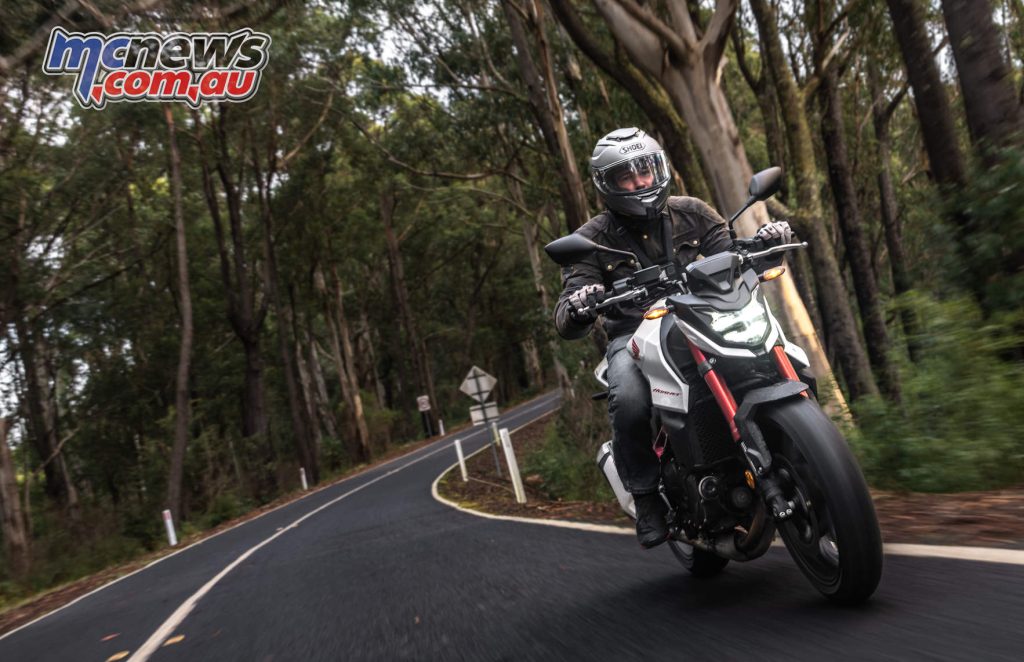
Maybe that’s based on my love for exceptional value (aka being cheap), and not having the headiest of motorcycle needs, but damn was I impressed.
I think the best way to introduce the Hornet is as a ‘roided up 650 nakedbike, obviously not learner or LAMS legal, but running an absolute gem of an engine backed by a well implemented electronics package and decent brakes, running on solid if not outstanding suspension. There’s no adjustability and no Brembos, so let’s keep things realistic…
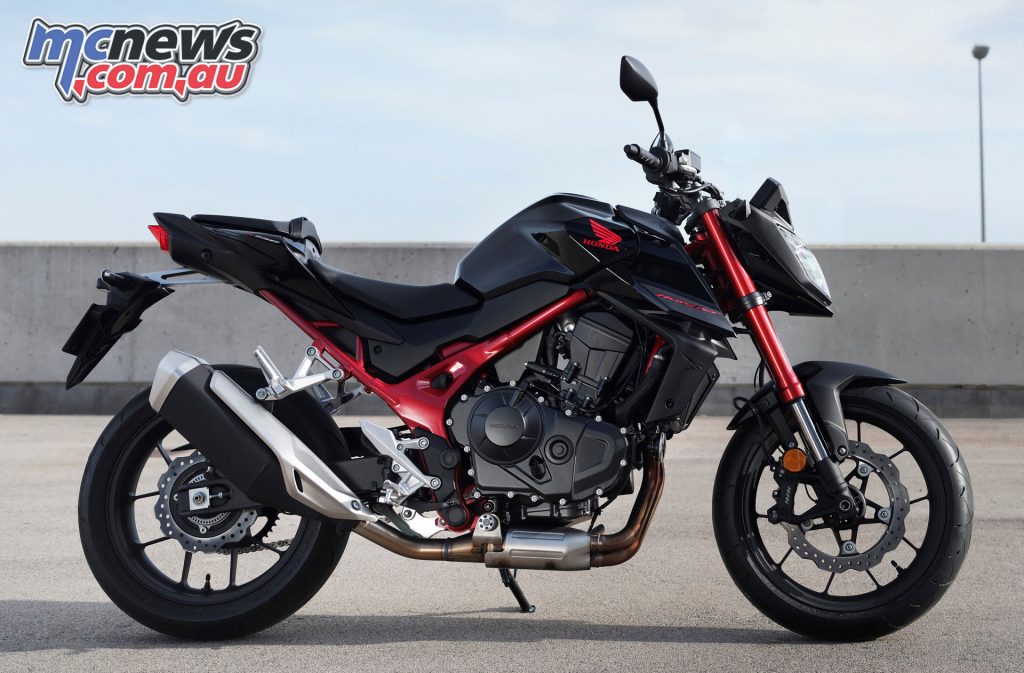
This is certainly a bike that’s more than the sum of its parts and honestly, one that I reckon will steal away sales from the bikes up in that almost $20k category when riders realise just how much you can get for under $14k. Or maybe that’s just me.
The early morning of the ride I was woken to the hammering of rain outside and the weather forecast showing chances of rain by 8 am. With a route I’m not particularly familiar of I’ll be honest I was hoping for dry roads, with a loop up to Marysville and through some great twisties, but fate was not on my side.
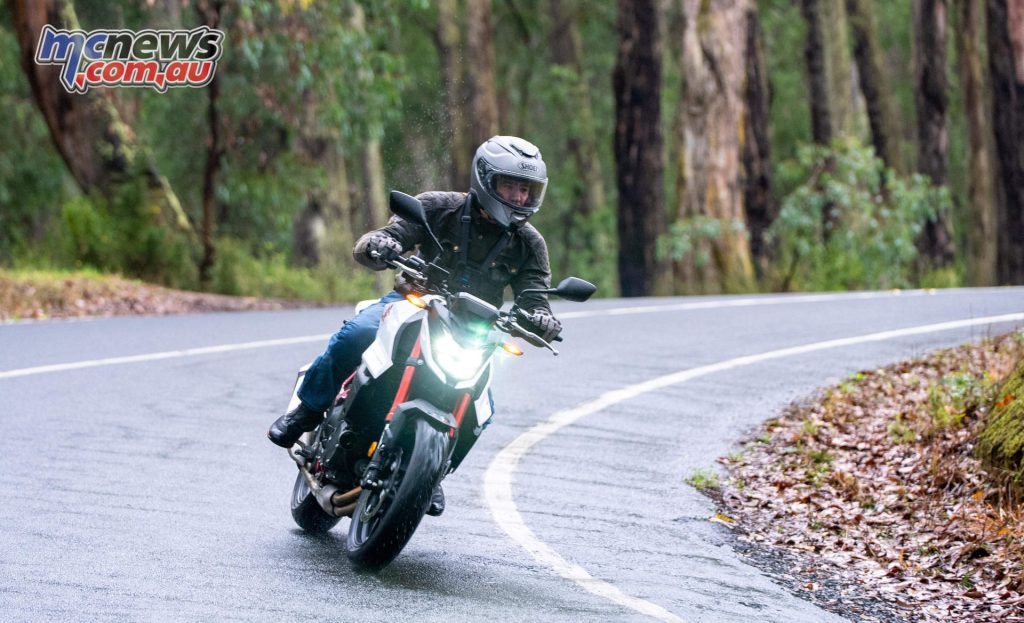
A dreary morning welcomed us many hours later and while not actively raining it was indeed very wet, punctuated by occasional light showers for most of the morning.
Once out at the bikes and through the directions to our first stop, which could be simplified into ‘follow the rider in front,’ we flicked the bikes into life and there was a welcome growl from that parallel-twin.
A growl that my GoPro refused to capture in anything like realistic timbre, but which subtly hinted at a bit of bite from this new powerplant.
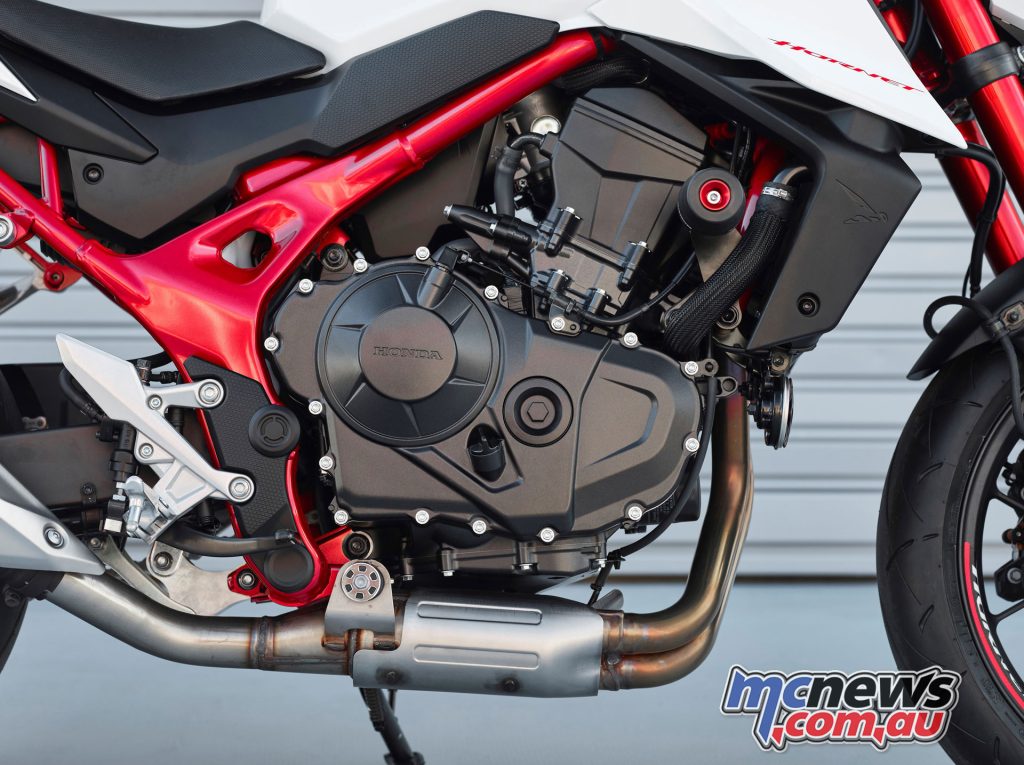
Now parallel-twins are generally considered a bit… boring, however I think the 270-degree crank layout provides the ideal compromise between a V-twin and the regular parallel-twin, with more character, a rewarding torque curve and normally plenty of fun on offer.
There’s a reason why everyone’s making them these days, and 90 ponies from the Hornet is plenty to play with in my mind. I’m not a huge V-twin fan either for context, which no doubt colours my preference.
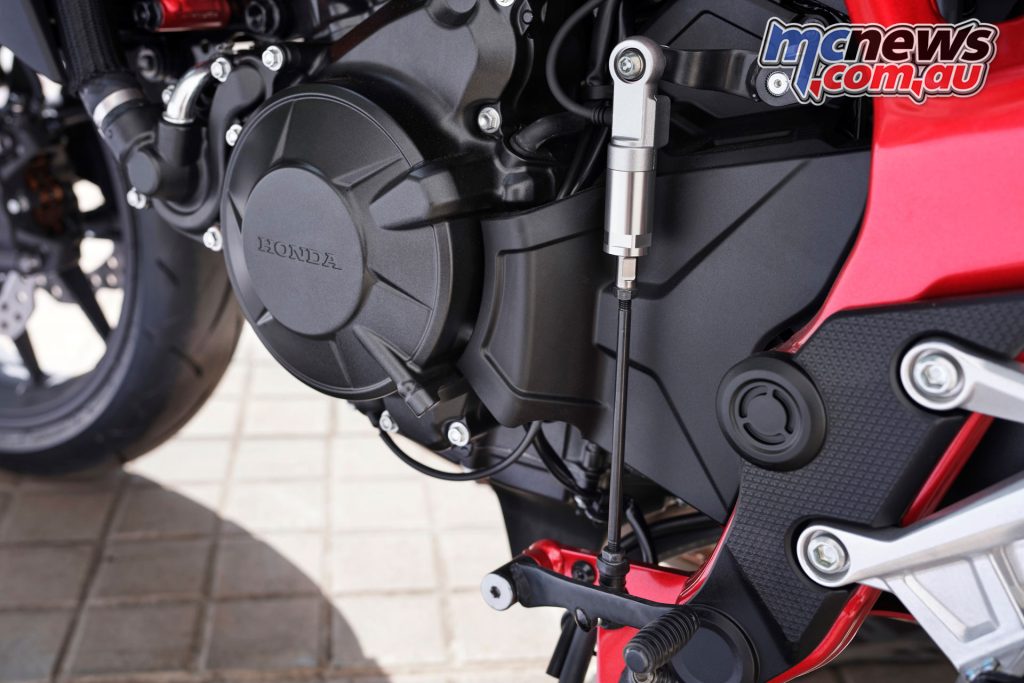
So Honda really nailed the engine on this one, it’s superb. Which makes sense as it’s the big selling point here, with the focus on torque really paying dividends on a roadbike, as you’d expect.
Setting off I flicked the bike into Rain mode, which is the most restrained throttle response, highest traction control (HSTC) setting and mid-range EB (Engine Braking 2) and off we headed, with the bright TFT displaying more than you need to know, and a switchblock Mode button making things easy for switches should they be needed.
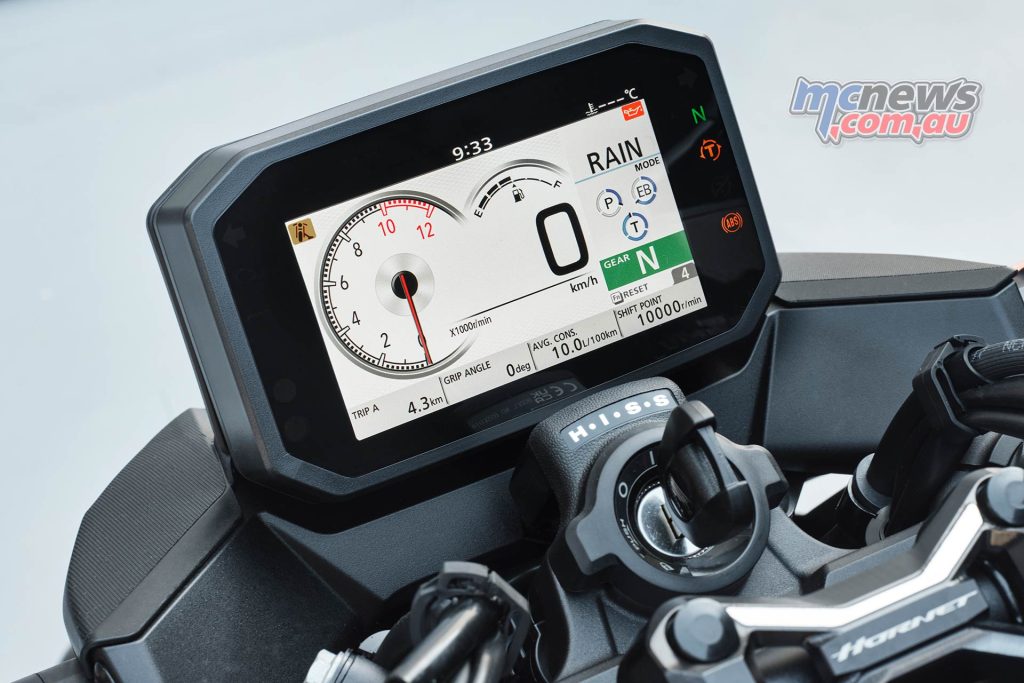
Power delivery was a bit doughy through the streets of Melbourne in this mode, but it was wet, and I was dodging oil plumes on the road, so more than enough for commuting. I even managed to get a bit of traction control activation going really giving it the berries at a set of lights, although this is the most intrusive setting so to be expected in the conditions
An upright seating position is typical nakedbike, good vision down the road, easy reach to the wide and somewhat tall ‘bars, relaxed, comfortable, imparting plenty of speed once in the twisties.
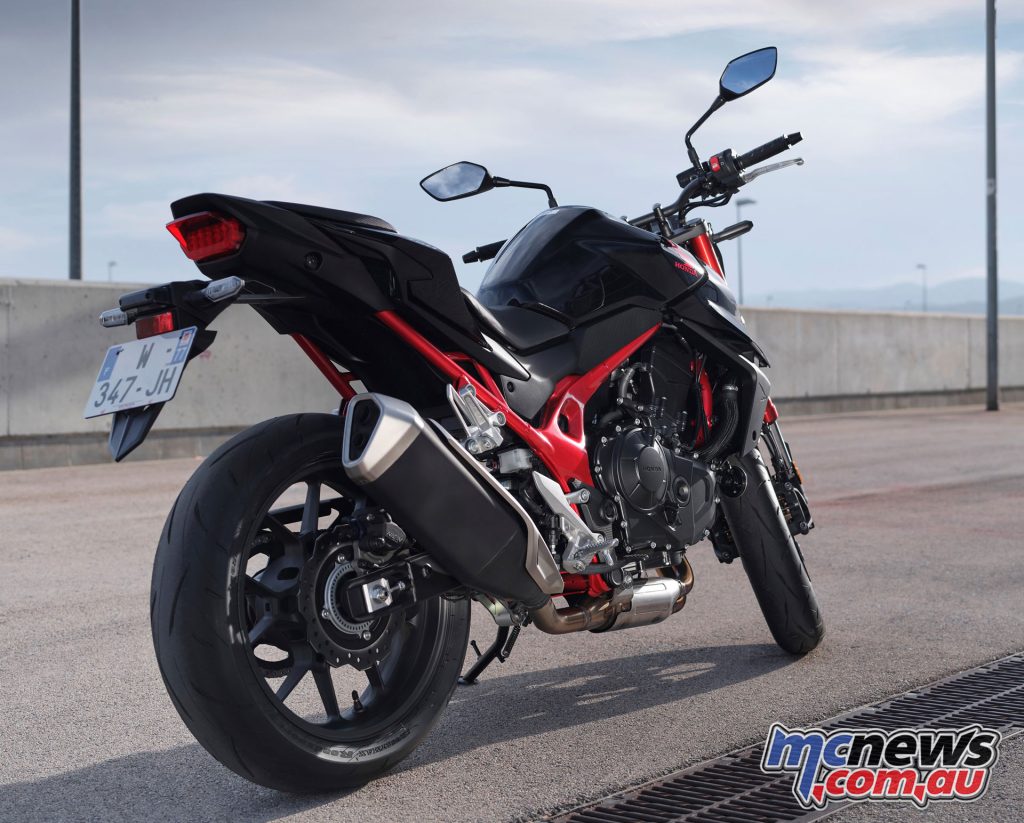
A 795 mm seat height is quite accessible, with a decent stretch to the pegs that after the day’s riding was still welcome, even if the seat had become a bit board-like after six-hours. Still, better than average to be honest, with an easy to grasp tank between the knees, and reasonably narrow overall design helping to make putting a foot down easy.
The 190 kg wet weight isn’t really noticeable, the Hornet carries that weight well once moving, with easy going handling that offers heaps of confidence, despite wet conditions on our test route.
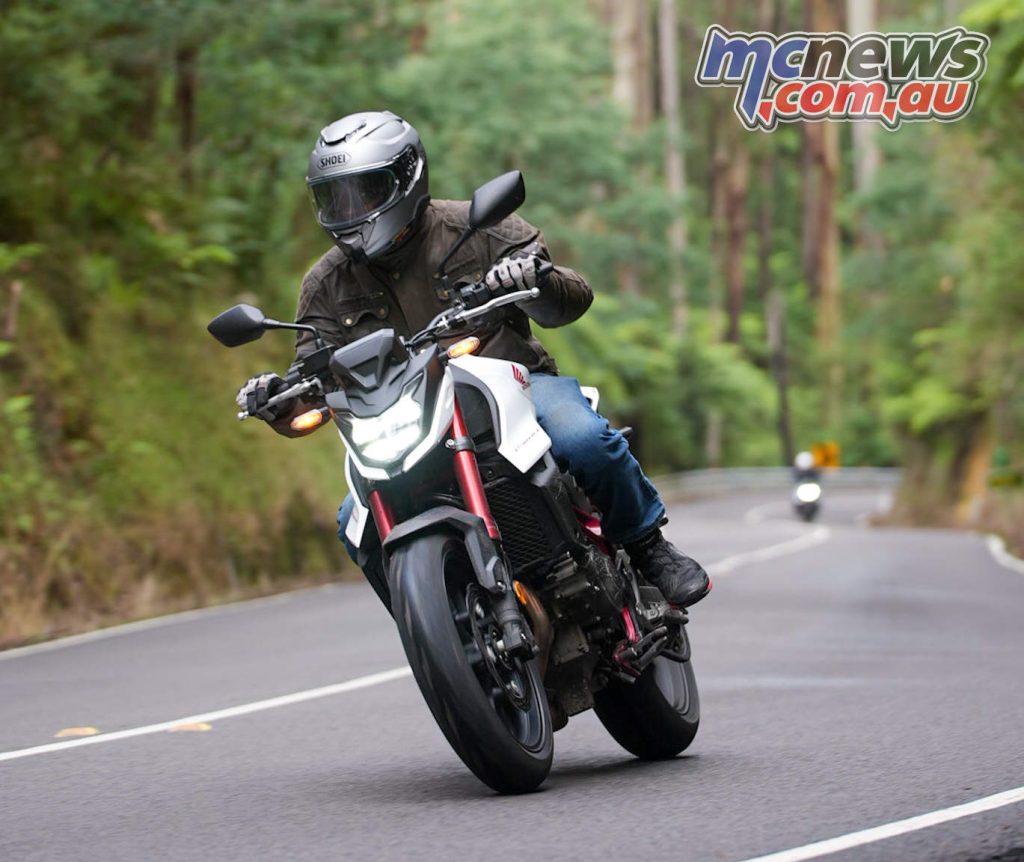
Granted we had a clear run out of Caribbean Park which is already on the outskirts of Melbourne, but my confidence on the bike and the Michelin Road 5s only grew throughout the day. While I’ve never been given reason to doubt the Road 5s in the wet, I’ve never really felt the wet feel was that intimate from them either. They are a good all-rounder for standard fitment though.
The pace wasn’t scorching, which honestly suited me as I got to know the Hornet better, and just discovered a package which is typically Honda. It does everything well, so you basically just take all those aspects for granted.
The non-adjustable suspension could be a little harsh over some bumps for me at 75 kg for sure, most noticeably at the rear where harsher bumps weren’t as controlled. Smoother tarmac was more rewarding, but worse road conditions revealing the compromises no doubt made for price in that shock. Not unusual for the category, but a rear weak point for the Hornet in my mind.
While the brakes were by no means delivering eye-popping bite, I wouldn’t change them. This was a situation where I wasn’t bemoaning the lack of Brembos, it’s a really solid set-up on the front. In the wet they were ideal, and I’ll take good modulation and feel, with a more forgiving nature over heaps of bite most days of the week on this style of bike. ABS wasn’t too sensitive either, despite the slippery conditions.
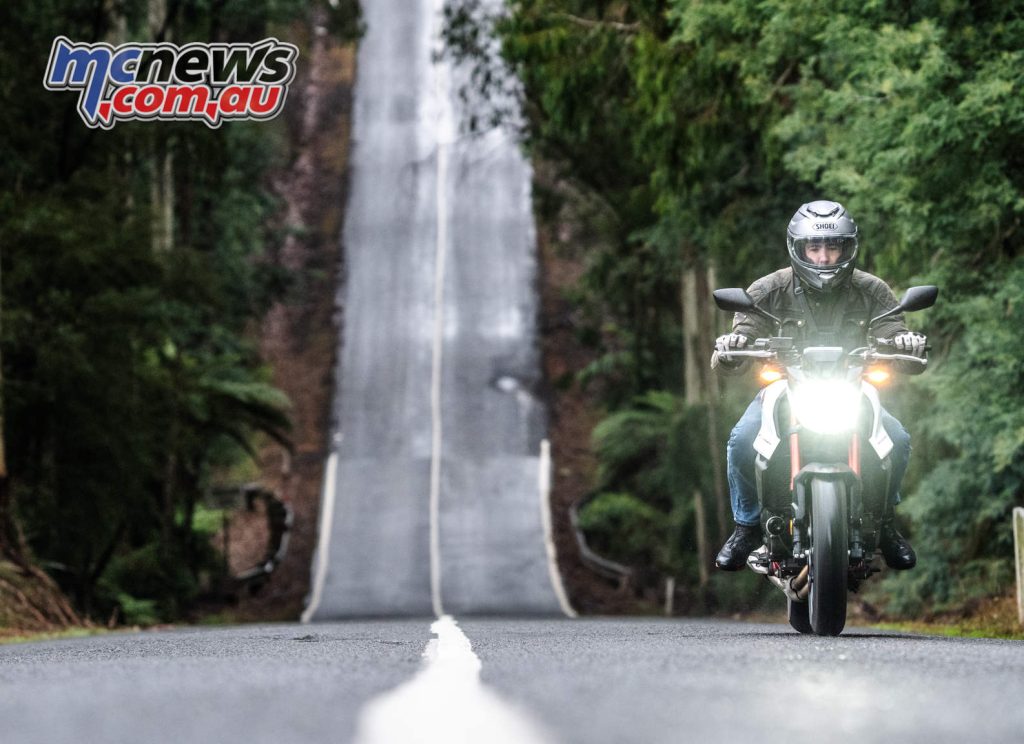
With a few photo and video stops under our belt I’d switched to Standard mode for some nicer roads and the bike immediately became more peppy and closer to what you’d expect for a 90 hp nakedbike, with all power modes apparently eventually reaching 90 hp… It’s just how they get there that differs so greatly.
The engine had a bit more flow and momentum to it, the revs picked up faster, with a crisper throttle response and it was just a more fun machine to ride, even in the still wet conditions. You’ll be snapping that throttle open at every set of lights for sure, to get a bit more of that growl.
The bike is slipper clutch equipped, but running Engine Braking setting two in Rain/Standard modes the transition off throttle at more casual speeds wasn’t as smooth as I expected, and those transitions can be a little rough, especially transitioning into the ample mid-range torque, from the more relaxed low end.
Ride a little harder and be a little more aggressive on those downshifts, maybe blip the throttle a little even and it was great if you kept within the torque, which to be fair is taking advantage of the strong mid-range.
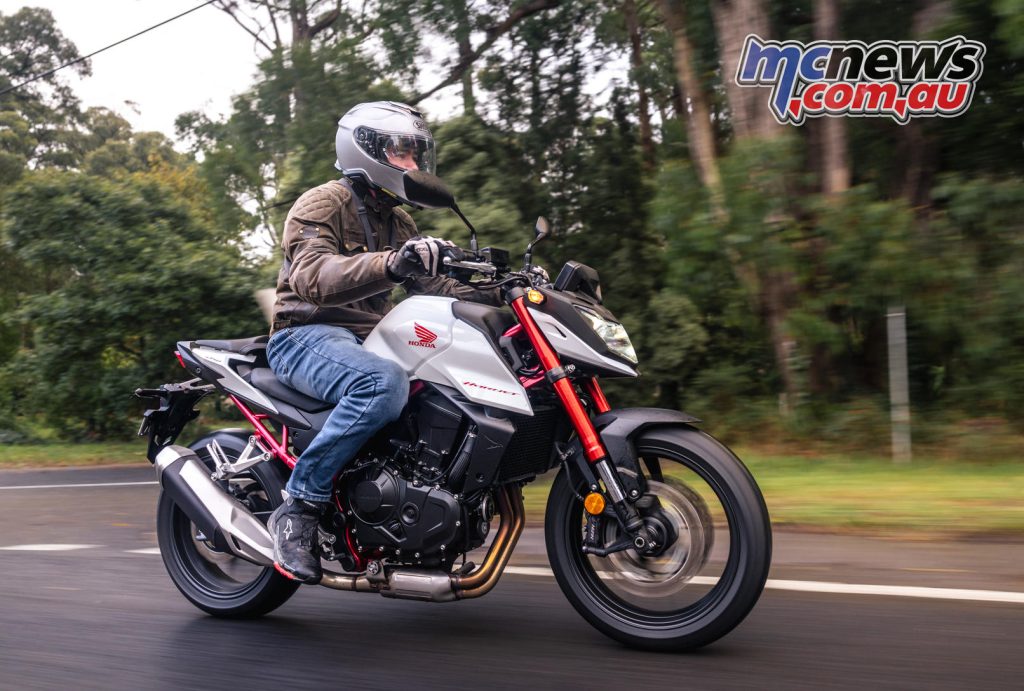
There’s great pick-up from low in the rev range and there’s an ideal low-rpm cruising point which just feels effortless and smooth below 5000 rpm, but the fun is in the mid-range past 5k.
Through the Reefton Spur and Black Spur I have I was enjoying the ride, despite the wet roads. The Hornet handling telepathically for my (moderate) pace, offering good balance, while flickability was a standout, easy and quick changes of direction.
I’d say the bike is pretty close to getting that ‘handling like on rails’ descriptor, with a very forgiving and confidence inspiring character, that’ll egg you on to push harder in the right conditions.
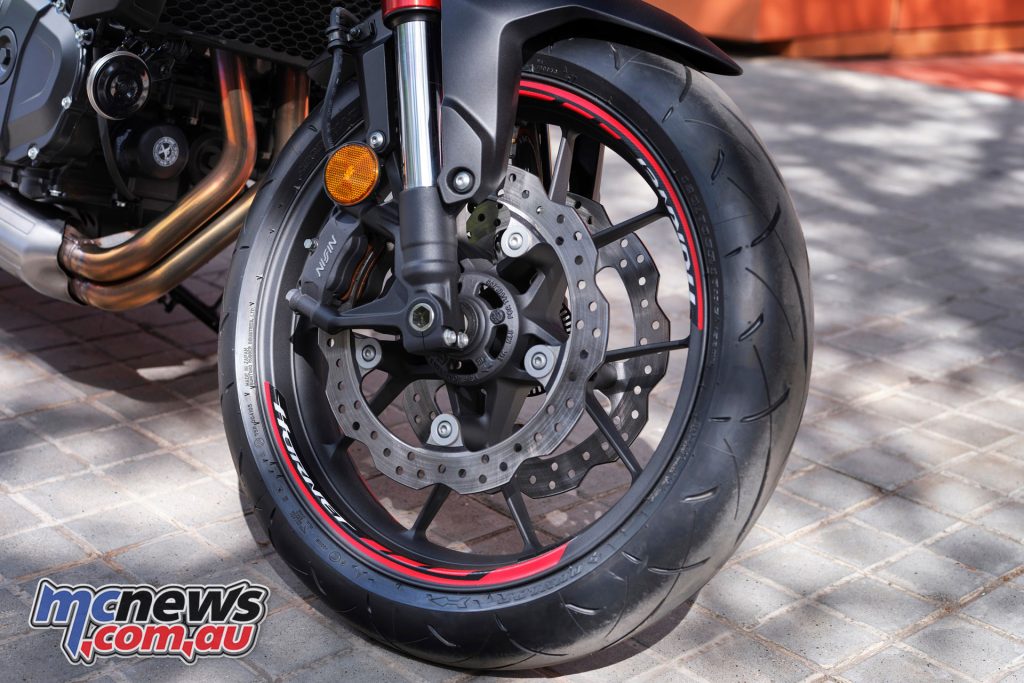
The Hornet is definitely a bike which is going to be most rewarding with that point-to-point riding style. The handling of the CB750 was exceptional, going where I looked and offering plenty of confidence.
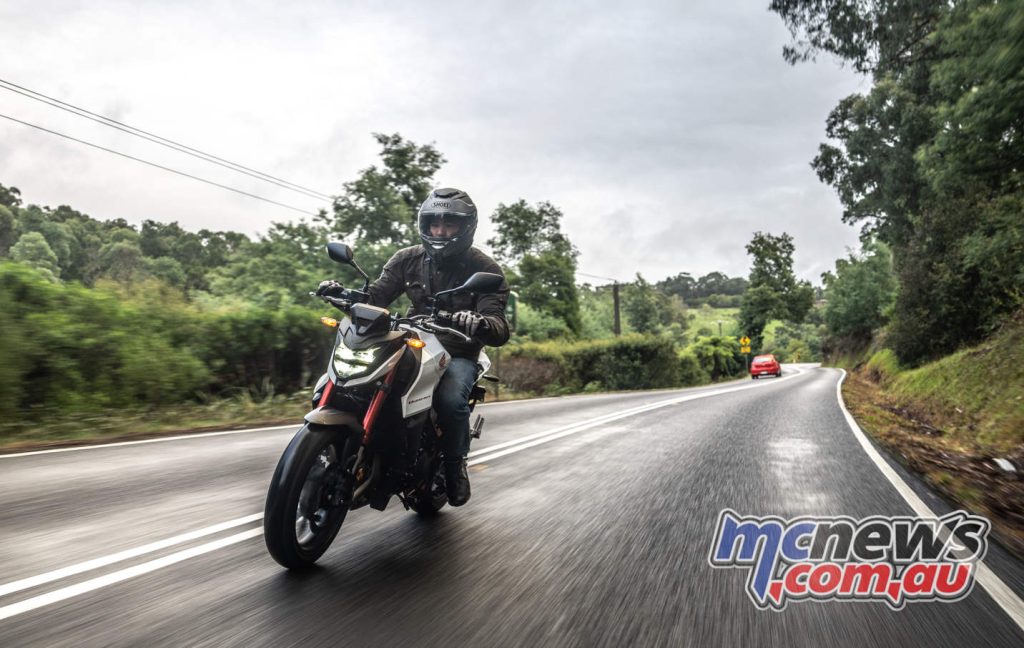
Thankfully after lunch the roads had dried out a bit and we got a decent run back towards Melbourne with drying road surfaces and got to have a little bit more of a crack. Enjoying some of the more sweeping bends with Sport mode transforming the bike.
Where Standard is much peppier than Rain, Sport is much the same compared to Standard, and maybe it was just me, but the bike sounded instantly meaner as far as that intake growl once you swap across to Sport.
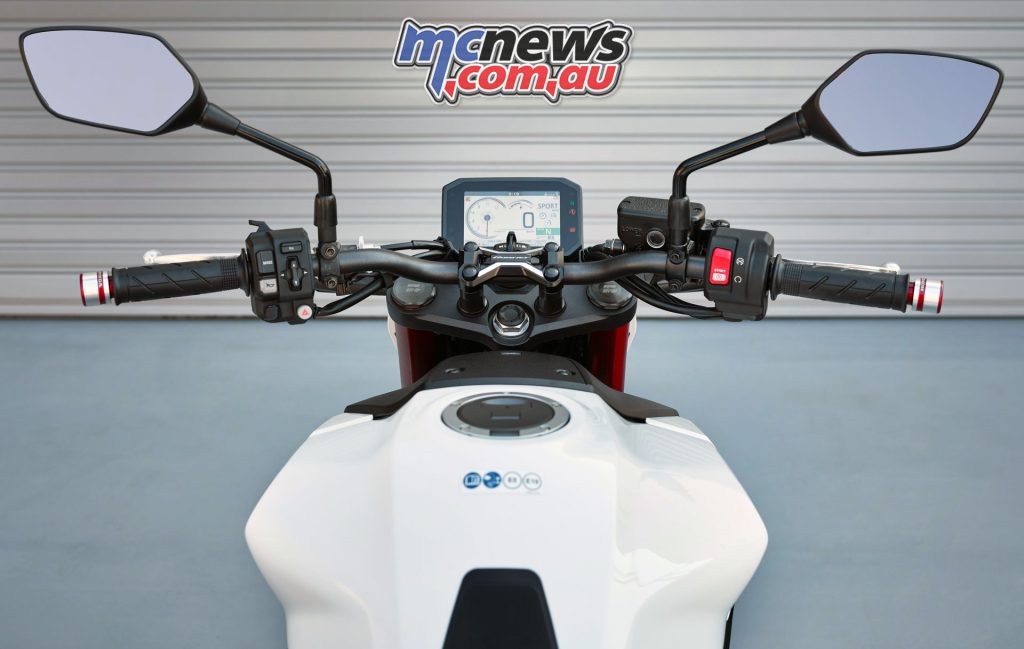
The throttle response was again more aggressive, more direct and the flywheel feel was lighter, lending the bike a sportier feel, and with the engine braking intervention reduced it made for smoother throttle off transitions. Getting back onto the power can be a little less smooth in Sport though.
It gets bandied around a lot these days when we talk about electronics and ride modes, but Honda have really done a good job in giving the bike three quite distinct characters between these modes. A simple Mode switch on the bar allowing them to be accessed easily.
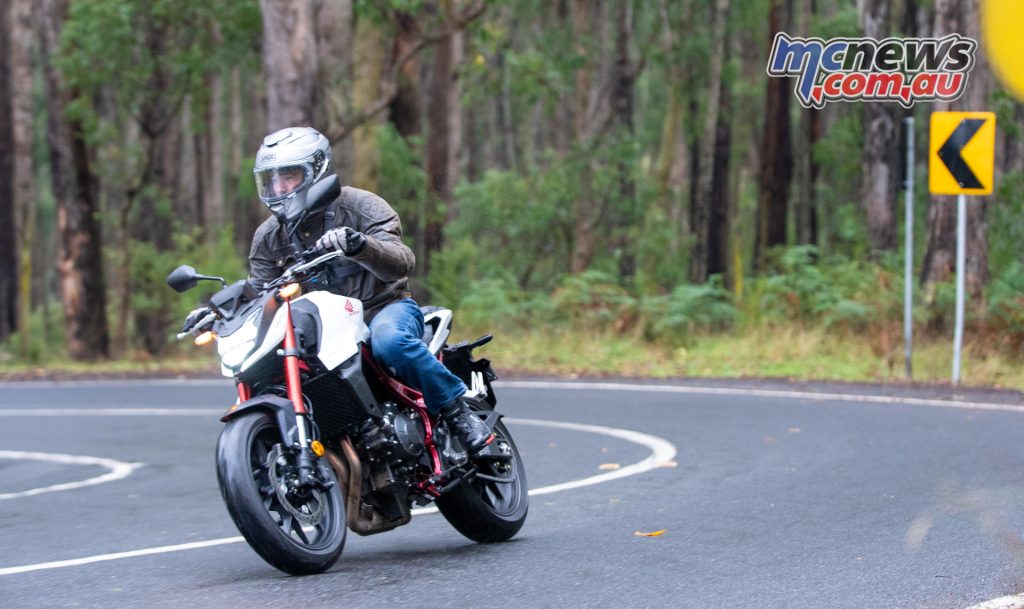
A User mode is also available to set up your own combo of the Power/EB/HSTC settings if the standard ones don’t quite do it for you. On the run, you will need to close the throttle to switch modes.
For me, my go-to User setup would be Power 2 (same as standard), EB 1 (lowest) and HSTC probably to 1. You can turn it off for wheelie fun, but it will default back to 1 if the bike is turned off then back on.
The run back into Melbourne also raised my estimation on the suspenders, again they are non-adjustable and definitely constrained by price, however as the speeds rose a little more, some of the harshness I experienced at lower speeds fell away and I was happier with how both front and rear performed at that faster pace.
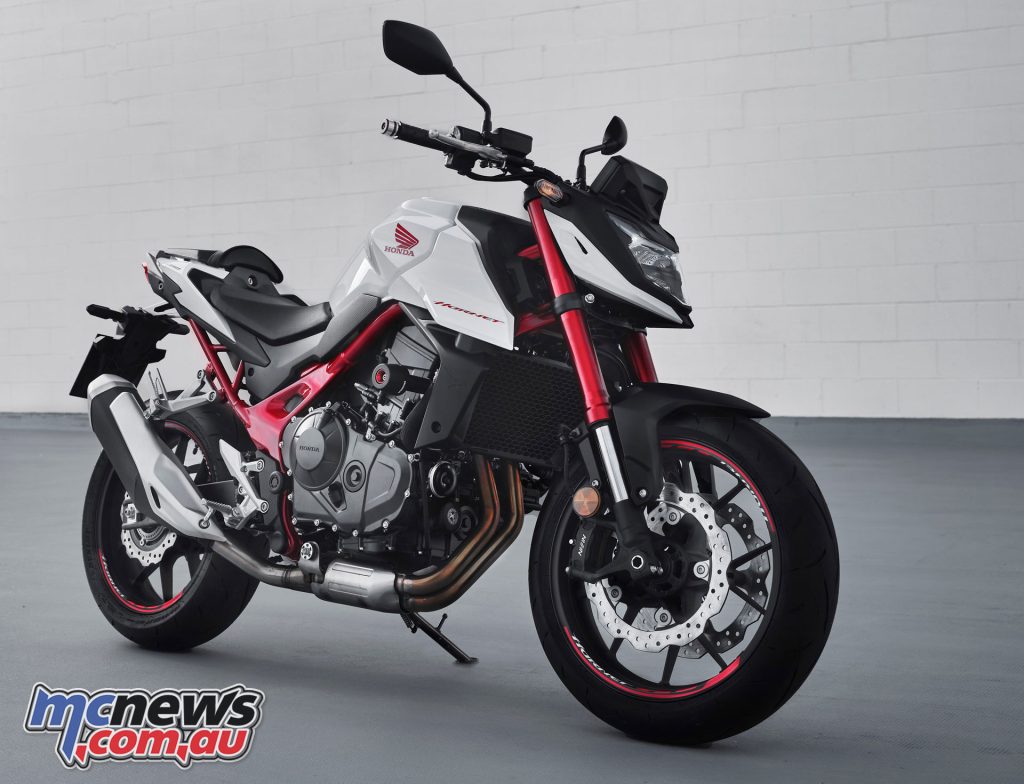
We were by no means doing ridiculous speeds, but the tracking and suspension feedback was predictable, marking a decent step up in my mind from many other non-adjustable set-ups, which can struggle to find that happy medium, especially when it comes to rough road surfaces.
An additional ride out of Sydney on the Hornet on roads I’m a bit more familiar with did however underline that the shock is what I’d consider the weakest attribute of the bike. Fairly smooth roads for me at 75 kg are a joy. The much harsher bits of the Old Road can be punishing.
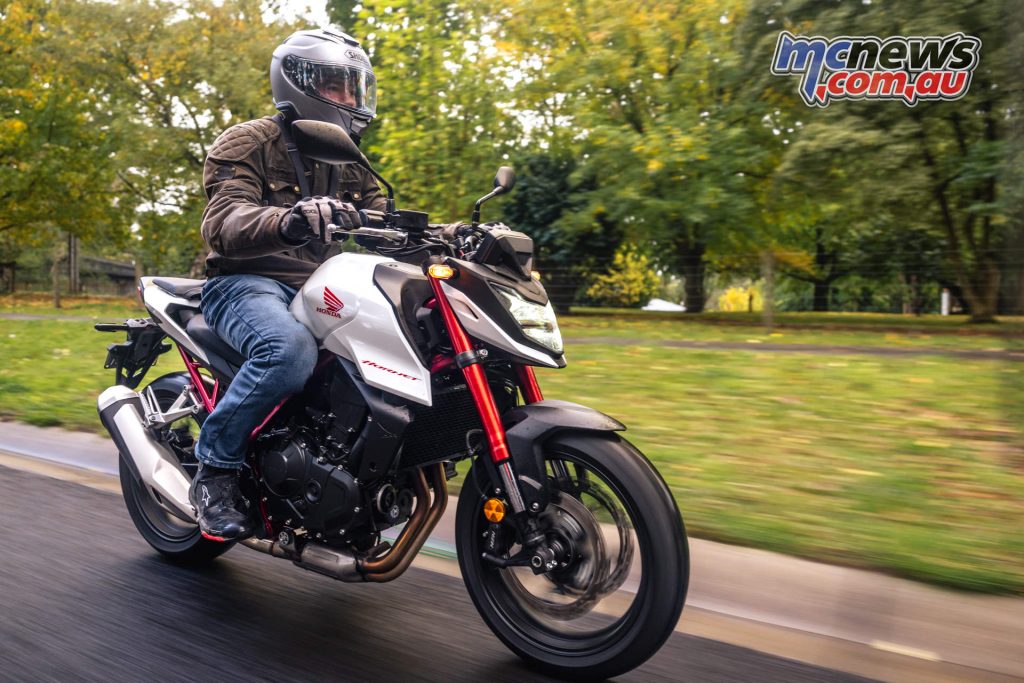
I did get knocked up out of the seat a few times over the really big bumps, especially if I’d already taken weight through my legs having spotted the road inconsistencies.
Arriving back in Melbourne the sun finally came out in full force, and I’ll admit, while I could have done without the rain, it did help highlight how user friendly the new Hornet is in all conditions.
It’s really the ideal stepping stone from a beginner motorcycle, and will feel like a rocketship compared to the 300-400 cc options that most new riders opt for, or as a welcome step up from a Honda 500.
So where do I think the Honda Hornet CB750 sits? It’s the cat amongst the pigeons in the unrestricted 650 class, both for performance and electronics, but also on price, where Honda have undercut a number of competitors offering more basic machines. That’s a good place to be, and even adding a quick-shifter still leaves the Honda as the most competitive option I can think of.
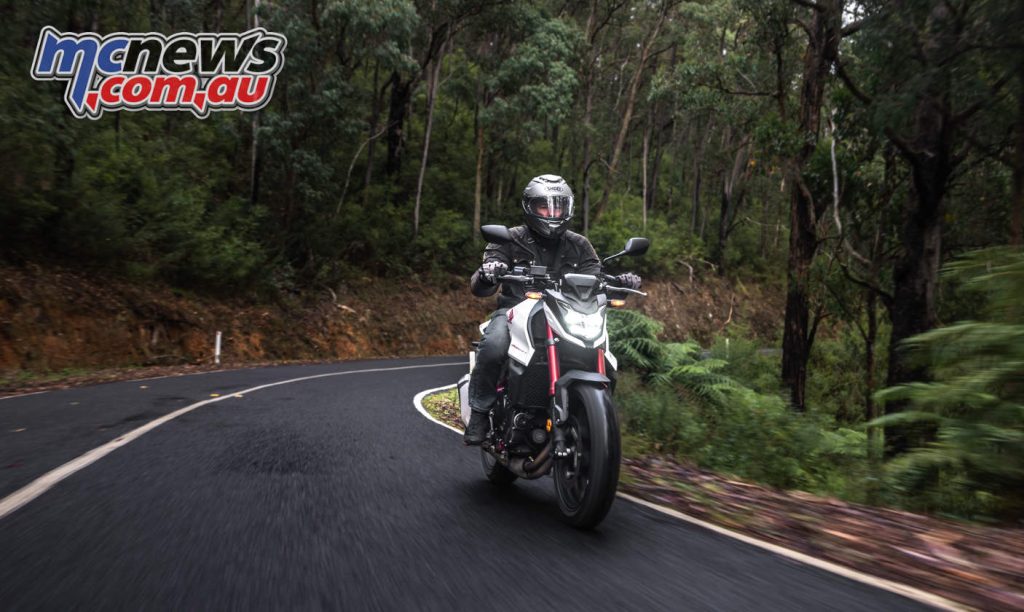
I think Honda could potentially steal some sales off the more expensive mid-range nakedbikes too. You’d be forgiven for thinking everyone only wants the absolute best package these days, however there’s plenty of riders taking a more measured and value driven approach, with the Hornet a good potential alternative to shelling out $20k.
I’d probably factor in the quick-shifter , and maybe a visit to a suspension tuner in the long term, then I reckon I’d be one very happy owner.
The Hornet is made in Japan, so you’re not paying top dollar for a Thai or Indian machine, you’re getting Japanese quality and we’ll assume Honda reliability.
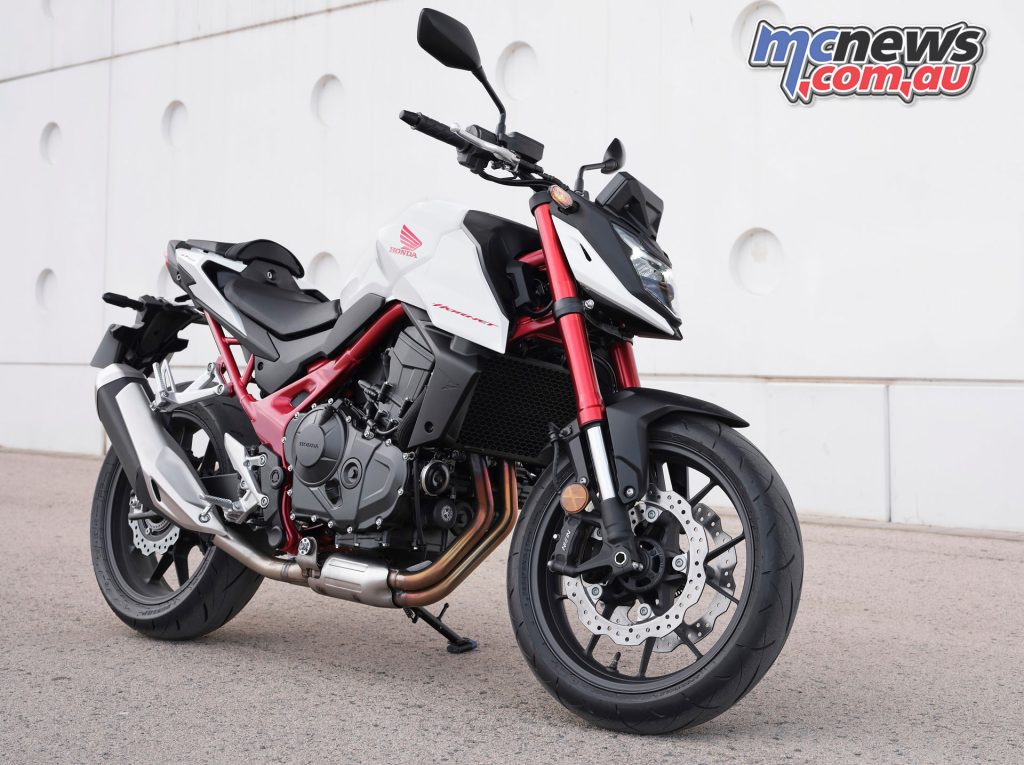
Manufacturing in Japan does mean that production is a bit slower than Honda would like, with half the Hornets coming into Australia already spoken for. So if you’re interested I would suggest heading to your local dealer for a test ride and get your name down pronto if you’re impressed.
You can check out the Hornet CB750 at the Honda Motorcycles website here (link).
Some other notes…
The Hornet CB750 does come with a new Honda voice control app (Honda Smartphone Voice Control System – HVCS), that can link the dash, mobile and comms system. Not my cup of tea, but certainly important to some riders, and Honda keeping it in-house apparently keeps the cost down compared to using other people’s tech.
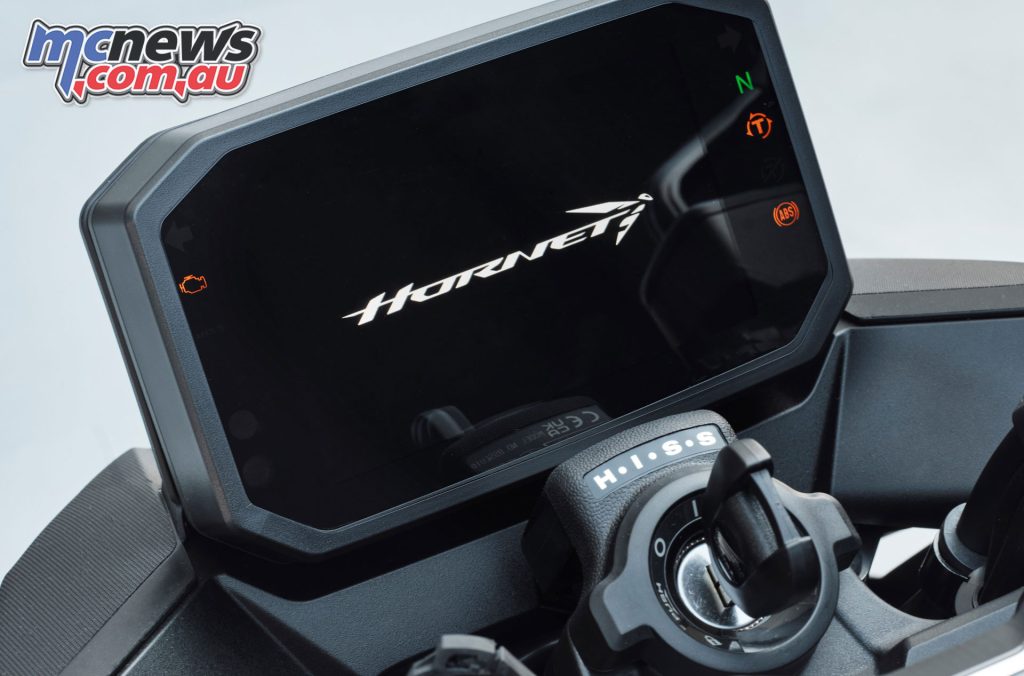
A couple of other pieces of handy tech include the self-cancelling indicators, and emergency stop signals, which activate your indicators on sudden braking. Lighting is also full LED, but there’s no cruise control.
The TFT dash is a five-inch and has four-layout modes with auto light/dark modes, and there’s a USB port under the seat with some storage room.
Accessory packs including a plethora of luggage, such as panniers, tail pack and tank bag. There’s also some bling like a seat cowl, visor (mini-screen), billet pegs and perhaps most important the quick-shifter, which is optional and $397 (plus fitment). Honda explain that keeping it as an accessory helped keep the standard price super competitive.
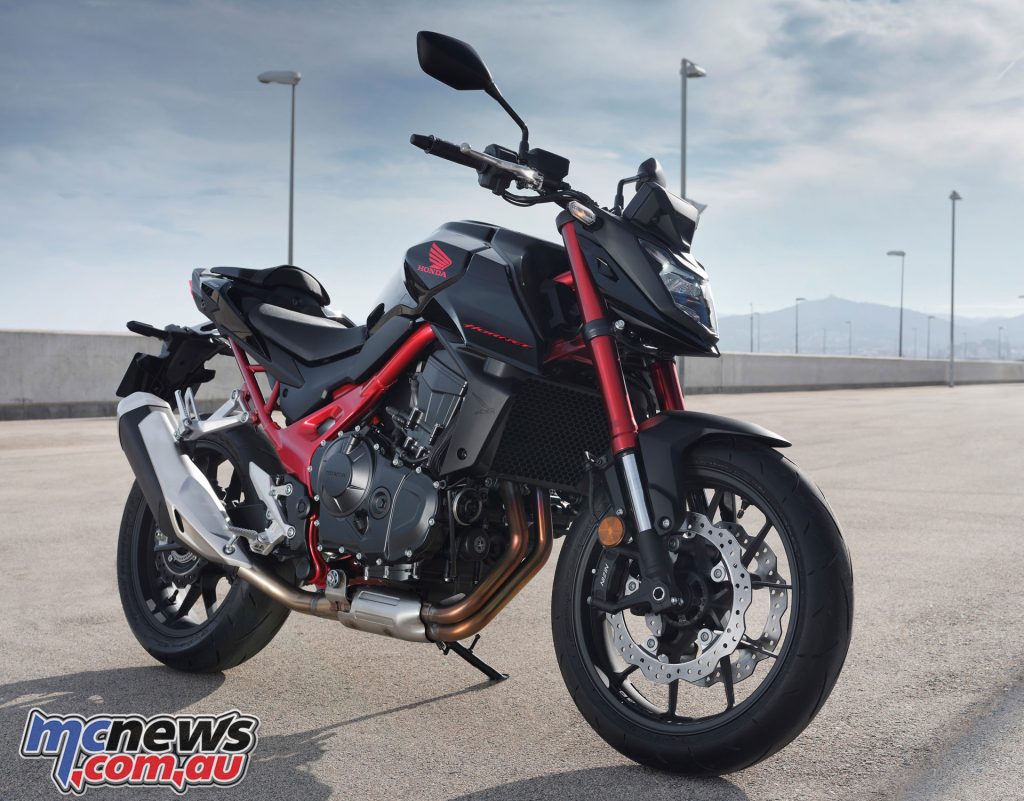
What I like about the Honda Hornet CB750
- Price and value are unbeatable.
- Electronics are well implemented.
- Accessible ergonomics, easy-going and fun handling.
- Absolute gem of an engine.
I’d like the Honda Hornet VB750 more if…
- Quick-shifter included in price.
- Yellow or red colour option.
- Jazzier headlight.
- Better shock.
2023 Honda Hornet CB750 Specifications
| 2023 Honda Hornet CB750 Specifications | |
| Engine | 755 cc parallel twin, 270-degree crank |
| Bore x Stroke | 87 x 63.5 mm |
| Compression Ratio | 11:01 |
| Valves | Single cam, eight-valve, 35.5 mm inlet, 29 mm exhaust |
| Claimed Power | 90 horsepower @ 9500 rpm |
| Claimed Torque | 75 Nm @ 7250 rpm |
| Transmission | Six speed |
| Clutch | Slip & Assist clutch |
| Frame | Steel diamond frame |
| Tyres | 120/70-17 (F); 160/60-17 (R) |
| Forks | 41 mm USD Showa SFF-BP, 130 mm travel |
| Shock | Five-stage pre-load adjustable, 150 mm travel, Pro-Link steel swingarm |
| Brakes | Dual 296 mm rotors, Nissin radial-mount four-piston calipers (F), single 240 mm rotor rear |
| L x W x H | 090 x 780 x 1085 mm |
| Wheelbase | 1420 mm |
| Ground Clearance | 140 mm |
| Seat Height | 795 mm |
| Fuel Capacity | 15.2 Litres |
| Kerb Weight | 190 kg |
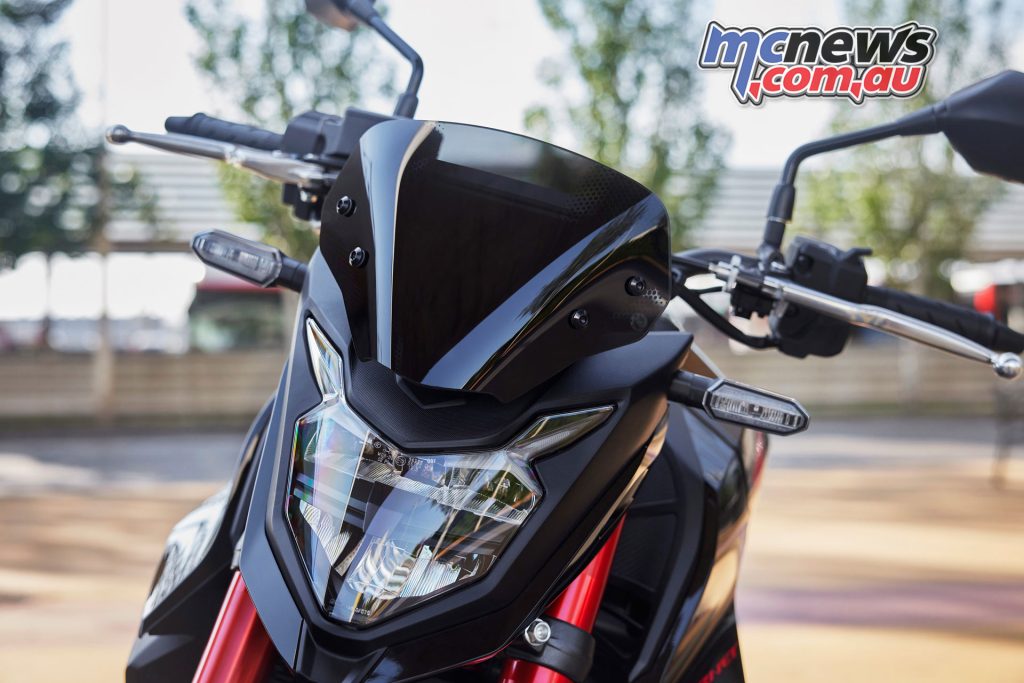
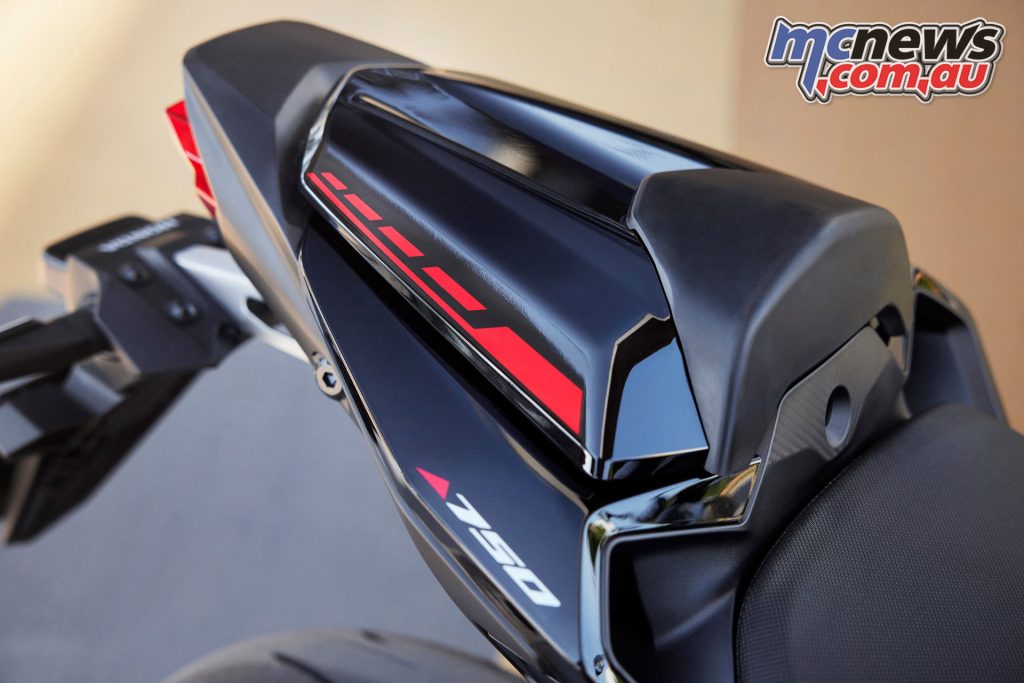
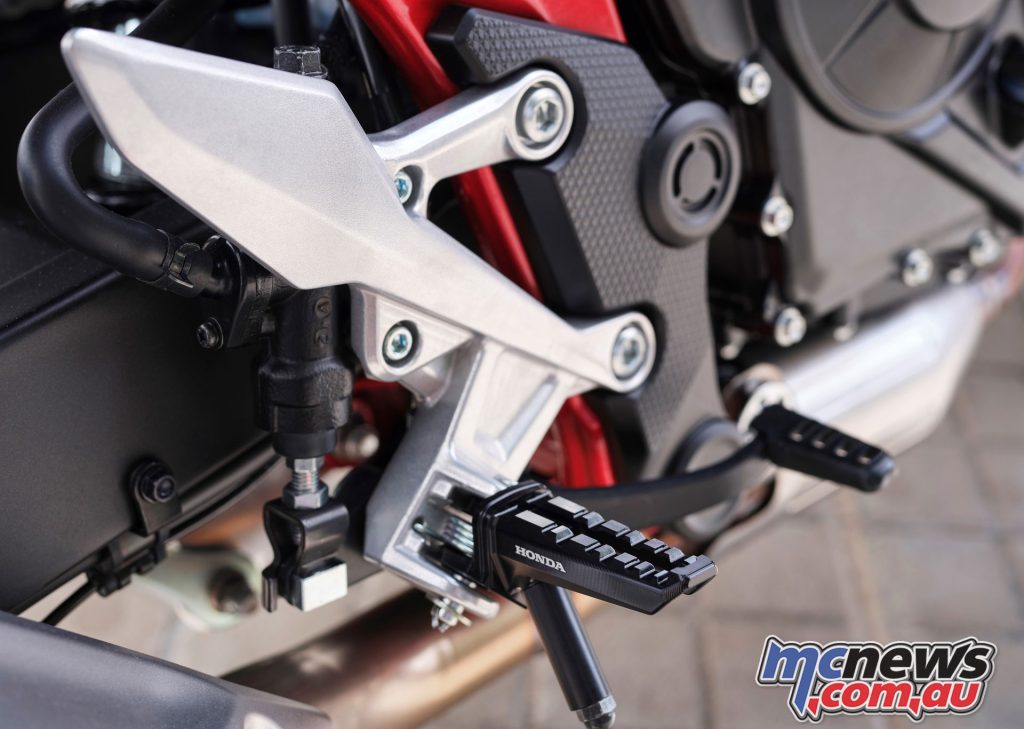
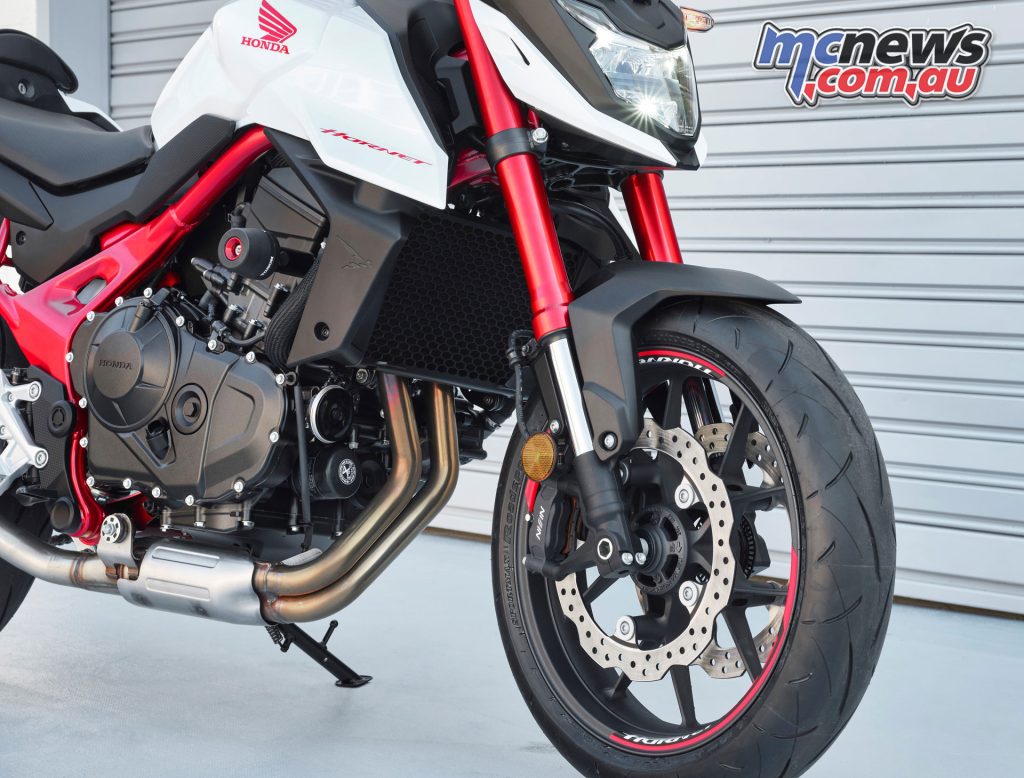
Images by Honda, Matthew Hayman, Julian Spiller







